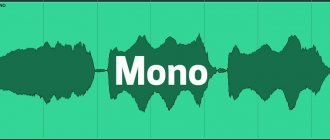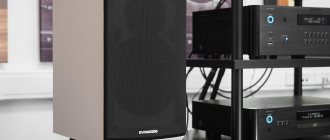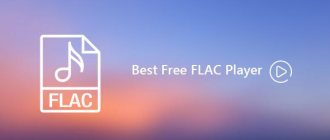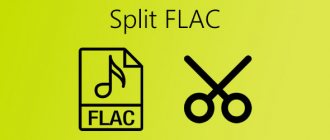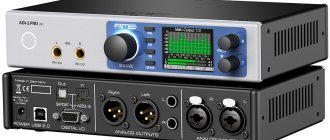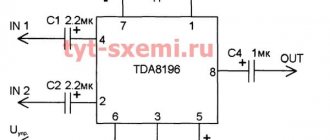Save and read later -
It looks like DSD is coming back into fashion. Most new digital devices support it, and the catalog of available albums is impressive - especially among jazz and classical fans.
What is it and how does it differ from other digital signal recording systems used in CDs and other Hi-Res audio formats? Let's find out.
DSD options
DSD characteristics
| Abbreviation | Direct Stream Digital |
| Audio data encoding method | sigma-delta modulation (read details and watch video) |
| Bit width | 1 bit or higher (read details about audio quality) |
| Sampling frequency | DSD 64 (2.8 MHz), DSD 128 (5.6 MHz, double), DSD 256 (11.2 MHz, quad), etc. (read details) |
| Number of channels | Stereo and multichannel |
| Carriers | SACD optical disc, including hybrid SACD (with CD audio layer), computer files (read details) |
| Specification | "Scarlet book" (1999) |
| Usage | Music production, home hifi/hiend audio |
Direct Stream Digital is an embrace of audiophile high resolution audio formats. It was created to improve the dynamic range of CD audio in the audible frequency domain of sound.
Read on to learn more about audio quality issues (noise, bit depth, bandwidth, DSD audio vs. PCM sampling rate).
How to open files for listening?
By and large, if we are talking exclusively about computer technology, you can open digital audio in PCM format with any convenient player (either built into the operating system itself, or created by third-party developers).
Another thing is that this broad category may contain files with different extensions that the system’s own tools may not support. In this situation, either players or audio editors come to the rescue. If we are talking about household appliances, some formats can be played on the most common DVD players without any problems.
However, Blue-ray players support the largest number of known audio types, including all PCM formats. But sometimes there is a need to edit sound files. What to do in this case?
1-bit and noise
Typically, this format has a bit depth of 1 bit. Therefore, the noise level is significant due to quantization errors.
To reduce the noise level in the low-frequency audible region, noise shaping is used. Noise shaping (noise shaping, control of the shape of the noise spectrum) is the transfer of noise energy from the audible frequency region to the ultrasound region.
Noise shaping (NS) of the spectrum of a 1-bit signal. Sigma-delta modulation
On the left side of the image, the noise spectrum has a level comparable to the level of a 1-bit music signal. A device (or digital processing) called a sigma-delta modulator “squeezes” noise energy from the audible frequency region of 0 ... 20 kHz into the ultrasonic region.
When such a 1-bit recording is played, the low-pass filter cuts out the “amplified” high-frequency noise.
DSD DAC (decoder, demodulator)
Thus, the noise level of a 1-bit signal after noise shaping (sigma-delta modulation) becomes comparable to the noise level of a multi-bit PCM (pulse code modulation) signal.
That is, 1-bit sigma-delta modulation can have the same audio resolution as a multibit signal. Read the details and watch the video here
Read DSD or FLAC [Comparison, Infographic, Explanation] >
Sampling rates
The DSD format uses a standard range of sampling rates based on 44100 Hz:
- DSD64 = 44100 * 64 = 2'822'400 Hz = 2.8 MHz
- DSD128 = 44100 * 128 = 5'644'800 Hz = 5.6 MHz
- DSD256 = 44100 * 256 = 11'289'600 Hz = 11.3 MHz
- DSD512 = 44100 * 512 = 22'579'200 Hz = 22.6 MHz
- DSD1024 = 44100 * 1024 = 45'158'400 Hz = 45.2 MHz
- etc.
Also 48000 kHz can be used as a base. From a technical point of view, there is no limitation on the sampling rate of a sigma-delta modulated signal. But there may be compatibility issues.
Overload and stability
When designing a sigma-delta modulator, engineers pay special attention to:
- noise level in the audible audio range and
- overload resistance.
To solve these problems, developers can vary:
- bit depth,
- sampling frequency,
- noise shaping.
These parameters must be considered in relation to each other.
Bit depth
Increasing the bit resolution reduces quantization noise (quantization error noise).
Noise shaping
Noise shaping “pushes” quantization error energy out of the audible range.
To push out more energy, you need cooler noise shaping.
Stronger noise shaping increases the likelihood of disruption of the sigma-delta modulator's stability when the input is overloaded. When the modulator is in an unstable state, there is no signal at its output or oscillations are generated. After stability failure, the modulator must be forcibly restarted.
Overload resistance of sigma-delta modulator
Sampling frequency
A higher sampling rate reduces the level of quantization error spectrum. Because the noise energy is distributed over a wider band. This allows for flatter noise shaping.
Energy is the area of the figure enclosed between the spectrum line and the horizontal axis in the band 0 ... [sampling frequency]/2.
Sampling frequency and quantization noise level
On the right and left sides of the image, the areas of the noise figures are the same. But a figure that is more stretched along the horizontal axis produces a lower noise level.
Increasing the sampling rate reduces the noise level in the audible audio band. This allows you to reduce the steepness of noise shaping and increase the modulator's resistance to overload.
Resume
We can see that lower noise and higher input overload tolerance of the modulator can be achieved in different ways.
For example, better sound quality is a matter of implementing noise shaping at the available bit resolution and sampling rate. But on the other hand, it is possible to increase the sampling rate and/or the number of bits to reduce the quantization error (noise level) without improving the noise shaping method.
Converting formats
But you yourself understand that when you have a huge collection of files, including thousands and tens of thousands of tracks, and even in different formats, to convert them into a single type, it is better to use specialized programs (audio converters) that support batch processing of files.
But even in this case, it is necessary to pay attention to one significant aspect. But what if the files are recorded at different volumes, and you need to, so to speak, bring them to a common denominator? Changing level parameters for each file will also be quite problematic! This is where converters come to the rescue, allowing you to “adjust” the volume of all files to one selected template. The Internet is full of such converters. And most of them are free. But if you want maximum audio quality, you'll have to do some work yourself, as you may need to change, say, the bitrate, sample rate, or audio depth. The work is painstaking, but the result, as they say, is worth the candle.
DSD in numbers
Professional audio modulators have noise levels in the audible audio range for sampling frequencies:
- DSD64 about -125 … -145 dB (comparable to PCM 24 bit)
- DSD128 about -165 dB (better than PCM 24 bit)
- DSD256 and higher about -170 ... -200 dB (comparable to PCM 32 bit)
The noise level in the audible range is almost independent of the demodulator. But the noise level should be suppressed as much as possible outside this band. Because ultrasonic noise can lead to intermodulation distortion.
Read about DSD vs DSF vs DFF >
Does DSD refer to Hi-Res audio?
How high resolution are DSD recordings? It's impossible to pinpoint the exact relationship between PCM and DSD, but the base format is roughly equivalent to PCM with 24-bit/88.2 kHz sampling rates.
The claimed dynamic range of DSD is around 120 dB within audible range. For comparison, for regular CDs it is 96 dB, and the theoretical maximum of 24/192 recordings reaches 144 dB.
Large numbers look impressive, but in reality even the CD range is more than enough for any recording.
DSD vs PCM
Direct Stream Digital (sigma-delta modulation) is very similar to pulse code modulation (PCM), but the shape of the quantization noise floor spectrum is changed to reduce noise in the audio range.
It is also possible to apply noise shaping to conventional PCM. But the difference lies in the bandwidth available to “push” noise energy out of the audio range.
DSD vs PCM
PCM has less bandwidth reserve (above the audio range) than sigma-delta modulation, and this is due to the higher bit depth and transition bandwidth of the DAC (digital to analog converter) output filter.
Noise shaping can also be used for pulse code modulation.
Thus, the format itself has no advantage. But its implementation may have differences in sound quality.
The sigma-delta modulation decoder (demodulator) is a 2-position (1/-1) voltage conditioner and low-pass filter. It is simpler than a PCM demodulator. Because the pulse code demodulator contains either a resistor matrix for voltage generation (R2R) or a digital sigma-delta modulator with a 1-bit decoder. Thus, we have more opportunities to make a DSD DAC cheaper and better quality than a multibit DAC.
Read details here >
Check out the DSD vs FLAC infographic article >
Read the article about DAC >
More about PCM
Digital streams are written as a combination of two states, 0 and 1; but in order for this information to be used, it must be organized in a special way. In almost all cases, a system called PCM (Pulse Code Modulation) is used.
Let's first remember how exactly PCM works.
When using PCM, the original shape of the analog audio signal is described using two parameters. The first is magnitude. On the CD it is represented as 16-bit digital data, which makes it possible to set 65,536 different signal levels.
To adequately represent the original waveform, it must be measured at precisely measured, regular intervals. These samples are performed 44,100 times per second. The number appears random, but the choice was very deliberate - it covers the full range of human audible frequencies (from 20 Hz to 20 kHz).
DSD compression formats
- Sigma-delta modulation is implemented as an optical disc SACD (Super Audio CD).
- The same type of modulation is contained in DSF, DFF, SACD ISO files (SACD disk image).
- WAV, AIFF, FLAC container with DoP-packed (DSD over PCM, DSD over PCM) content.
An SACD disc can be converted losslessly to a SACD ISO file [], [], [].
SACD ISO file can be decompressed losslessly into DSF or DFF files.
Read more about DSF and DFF files.
1-bit audio files (DSF, DFF, SACD ISO) and discs can be compressed to size using the DST (Direct Stream Transfer) method.
DoP is an open protocol that allows 1-bit audio to be packaged into a multi-bit format for compatibility with software and hardware []. DoP cannot be reproduced like regular PCM.
Also, 1-bit audio can be broadcast over the network.
Uncompressed DSD64 requires a bandwidth of 2.7 Mbps = 44100 Hz * 64 / 1024 / 1024.
Sources, media Direct Stream Digital
Also, a combination of a CUE index file and a DSF/DFF audio file can contain a 1-bit album.
How to play DSD files?
Chord Hugo 2 is capable of playing files up to DSD512
In recent years, digital components have increasingly supported DSD playback; this is due to the increased availability of downloadable audio recordings. Check if your portable music player, network player and/or DAC support this format.
The most modern mid- and high-end digital devices usually have this support; If your components are one of them, be sure to add this format to the already familiar FLAC and WAV. Some flagship smartphones are also DSD compatible. And even Apple iPhone users can play DSD files using additional equipment.
On music download sites you can sometimes see the designations DSF and DFF. These are two types of DSD files; all you really need to know about them is to always choose the DSF version if your player supports it, as it works better with metadata (such as artist name, song title, album cover and the like).
DSD players
To play DSD on a computer, software audio players are used. They can play one or more 1-bit file formats. Hardware DSD players can play both optical SACD discs and DSF and DFF files.
1-bit files can be played directly through a DSD DAC/player or converted to PCM on the fly for playback using a PCM DAC. Read about SACD conversion here
1-bit playback can be implemented through a special ASIO driver (software) for Windows, including DoP (DSD over PCM) audio packaging format (example).
An optical SACD disc can be played on a hardware player. The author has no information about available SACD drives for regular computers to play SACD optical discs.
The stereo player can convert (downmix) multi-channel audio into stereo on the fly. Alternatively, multi-channel files can be pre-converted to stereo. This allows you to save limited hard drive space on your portable audio player (DAP). Downmix is lossy processing. Its quality depends on the specific implementation.
How to edit PCM digital audio format?
It is quite natural that with the increasing capabilities of modern computers in terms of sound processing, special software products have appeared that allow you to edit sound files of almost any known type.
All currently known programs of this type easily work with any objects that support PCM technology, opening them in the form of the most ordinary wave. In some applications like Audition, when opening or saving, the PCM category is selected in the format field, after which you can only work with files of certain formats.
DSD converters
DSD converters are designed for:
- DSD to PCM conversion,
- PCM to DSD conversion,
- converting SACD ISO to DSD,
- SACD ISO to PCM conversion,
- 1-bit audio resampling,
- changing the volume level,
- volume level normalization,
- suppression of clicks at track boundaries,
- other processing.
Read how DSD audio converters work here >
List of converters (convert all or some types of DSD files [DSF, DFF, SACD ISO])
- AuI ConverteR 48×44
- Audiogate
- dff2dsf
- iso2dsd
- JRiver
- Foobar2000
- TASCAM Hi-Res Editor
How to change the file format to PCM standard in audio editors?
As is already clear, if you open an audio file in an audio editor that is not supported by the operating system or some playback device, you can use the simplest method to convert the format.
It consists of simply saving the source audio in another desired format, selecting from the list the one with which you can work in the future.
DSD editing
Read the main article about DSD editing >
DSD editing is quite a complex process due to modulating noise in the high frequency region. Nonlinear processing may result in audible intermodulation distortion products of ultrasonic noise.
Currently, the author does not have information about “natural” (native) processing of 1-bit audio (for example: changing the level, resampling, etc.) without converting 1-bit to multibit format and vice versa. In addition to merging/cutting audio files.
Read the article DSD vs DSF vs DFF >
DSD editing
PCM in this context can be considered as "multi-bit DSD". Pulse code modulation does not necessarily mean "24 bit/352 kHz" or the like. The author recommends using 32- or 64-bit float (floating point) formats. The PCM in question contains high frequency modulation noise. But, to convert this “multi-bit DSD” into 1-bit, modulation with noise shaping is required.
The losses when editing with 1-bit/multibit conversion are approximately comparable to resampling.
Recording studios may distribute DSD recordings without editing.
There is also a DXD format. This is PCM (usually “24 bit / 352 kHz”, etc.) with high sampling rates, bit resolutions and the “hereditary” high-frequency noise of DSD. Unfortunately, this noise can lead to audible harmonic distortion products. It is recommended to cut out (filter) this noise before nonlinear processing.
Watch and share: an experiment in removing high-frequency noise
What is DSD audio? How it works, where to download files and much more
The DSD format is back in fashion. Most new digital sources and DACs are DSD compatible, and the DSD music catalog is now quite large, especially in the areas of jazz and classical. But how is DSD different from digital CDs or other High Resolution formats? Let's figure it out.
Between zero and one
Digital signals are represented by a sequence of zeros (0 V voltage value) or ones (full level voltage), and this sequence, in encoded form, carries information about the music signal. This encoding is standardized and in its most common form it is called PCM (Pulse Code Modulation). With PCM, the original analog music waveform is encoded with 16-bit digital data, allowing 65,536 different signal levels to be defined.
Converting an analog signal to PCM format 1. Original analog signal 2. Measuring the analog signal at fixed time intervals 3. Value of the original signal at the 19th measurement point
Thus, an analog music signal must be measured at regular intervals in order for it to be properly represented as a digital signal. This measurement is performed 44,100 times per second. Although at first glance this frequency of measurements seems excessive, in fact it was determined after careful calculations. It allows you to cover the entire range of sound frequencies from 20 Hz to 20 kHz, which is perceived, at least in theory, by human hearing.
Serial data
The DSD (Direct Stream Digital) format takes a different approach to presenting the music signal. Back in the mid-1990s, it was developed as a way to archive old analog recordings. DSD was developed as a simpler and more cost-effective way to store digital music than PCM. Additionally, DSD was designed to be easily converted to PCM at multiples of 44.1 kHz sampling rates.
Around the same time, Sony and Philips were developing a replacement for CDs called SACD. DSD turned out to be the ideal choice for the new format, also because it had excellent copy protection.
DSD is an easy format to use and therefore cheap to use. It requires less processing than PCM and can be used with simple and inexpensive DACs.
How does DSD work?
DSD uses a single bit of information that indicates whether the analog signal at the current sample (measurement point) is higher or lower in amplitude than the previous one. Compared to the more than 65,000 different values that 16-bit PCM has, just two values in DSD (0 if the signal is lower, or 1 if it is higher) does not look very impressive.
Converting analog signal to DSD format
However, this is offset by a very high sampling (measurement) rate of over 2.8 million times per second, which is 64 times the processing speed of CD format. For this reason, standard DSD is sometimes called DSD64, while the double and quad speed versions are called DSD128 and DSD256 respectively. There is even a DSD512 specification, although hardly anyone has already heard music in this format.
Standard DSD recordings are also still relatively rare compared to PCM alternatives, and the repertoire of this music is quite limited. However, DSD fans argue that this format is as close to analog as possible for digital.
If you look at a DSD digital stream, you can draw an analog signal just by looking at the density of 0s and 1s. The higher the 0s, the lower the analog signal level, and vice versa.
What are the disadvantages of DSD?
This all looks good, but there are also problems with DSD - a signal in this format is inconvenient for subsequent processing. Therefore, for those procedures that need to be done with a digital signal (equalization, editing, dynamic range control or adding reverb), it is common to convert the DSD stream to PCM, and then, after processing, it is converted back.
That's hardly good for sound quality, right? However, almost every DSD studio recording goes through this process.
You may also come across a digital format such as DXD. It was here that the original DSD signal was converted to 24-bit/352 kHz PCM and processed in that form. Although the name (intentionally or not) sounds like DSD, it is essentially just PCM at a very high resolution.
DSD also has a higher noise level than PCM. However, special processing allows noise to be shifted above the audio range, optimizing detail and dynamic range in the audible region. And high-frequency noise is easily filtered out.
Is DSD a high definition format?
So, how high resolution are DSD recordings? An exact comparison between PCM and DSD cannot be achieved and it can be said that DSD64 is roughly equivalent to PCM 24-bit/88.2 kHz. The dynamic range of DSD in the audible frequency range is approximately 120 dB. For comparison, a CD has this figure at 96 dB, and for recording with 24-bit / 192 kHz parameters it can reach a maximum of 144 dB.
Of course, larger numbers look more attractive, but in reality the CD's capabilities will be more than enough to cope with any music recording.
Who will play DSD for us?
DSD playback has become much more common for digital technology in recent years, and this is due to the greater availability of music in this format.
The Pro-Ject Stream Box S2 Ultra streamer supports all digital formats
Just make sure your portable music player, streamer and/or DAC is DSD compatible. New digital audio devices will likely already have DSD support, and with them you won't be limited to FLAC or WAV formats. Some flagship smartphones support DSD natively, and even Apple iPhone users can play DSD files, albeit with the help of additional hardware.
DAC with headphone amplifier Pro-Ject Pre Box S2 Digital supports PCM and DSD formats
What files carry the DSD format? On the corresponding sites you can come across the terms DSF and DFF - these are the entries in DSD. In this case, you need to choose DSF files to download, since they are the ones that carry the metadata (artist/song name, album name, etc.).
Where can you buy DSD audio files?
Most major music sites sell DSD albums for download. You can consider resources such as HDtracks, Highresaudio or Primephonic as a starting point. Alternatively, if you still prefer physical media and have a compatible disc player, you can start buying SACDs - they are still widely available.





